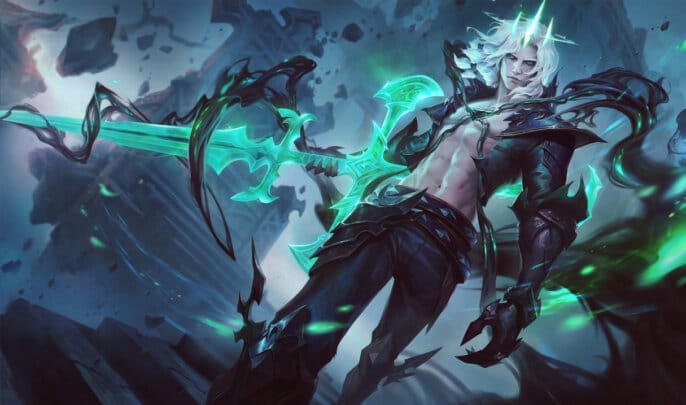League of Legends has fallen victim to the inevitable phenomenon of “power creep”, like so many other games. Here’s how Riot Games could reverse that process.
League of Legends was released back in 2009 and has withstood the ravages of time very well. Since its release and subsequent foray into esports, the game has evolved countless times and seen an enormous number of meta -changes. Nevertheless, the MOBA has never lost its international relevance; on the contrary, the number of active players has steadily increased. Despite this positive development, the general opinion about the current state of the game seems to be increasingly negative. The recent attitude of Riot Games towards revisions and design of Champions has largely led this downward spiral and promoted the phenomenon of “power creep”.
“Power Creep” is unique to League of Legends
This is a process in which new characters and content in a game are always stronger than the previous content. Each new addition trumps its predecessor and old content gradually becomes weaker and weaker. This phenomenon occurs in some video games, but is particularly noticeable in games that have a long lifespan with regular updates. In titles like World of Warcraft, for example, new weapons cause significantly more damage. Blizzard has fixed the problem by performing a “number squish”. This means all numbers have been adjusted and the damage in general in the game, as well as the health points of the enemies have been changed.
i know people like to meme 200 years but the power creep in league has been insane. Aphelios can do just about everything, wukong is ulting twice and 1 shotting with just base dmg, so much random healing and movement speed in the game, its so frustrating to play
— William Chen (@stuntopolis) May 5, 2020
In a game as competitive as League of Legends, it is difficult to combat power creeping. The base damage of champions and items is usually barely changed, and Riot has generally done a good job of preventing this kind of gradual increase. Instead, the power creep phenomenon came mostly from champion designs. While each champion in LoL is unique and has its own special place in the game’s ecosystem, a widespread trend has occurred.
The originally clear dividing lines between champion types, such as Mage, Tank or Assassin have become increasingly blurred. Mobility, Engage or Burst Damage abilities can now be found on most new champions. These have consequently gained priority as they have a much more versatile use. In a game with over 150 champions, it will always be difficult to balance all characters. However, some champions have simply been irrelevant for years. With new characters becoming more powerful as soon as they are released, it seems Riot Games has already completely accepted the power creep phenomenon.
Gwen & Viego, a direct comparison with ‘old’ champions
Gwen and Viego are the latest and clearest examples of LoL’s power creep. Both champions have near 100 percent pick and ban rates in professional leagues around the world and regularly mix up both solo lanes and the jungle. A look at Gwen’s skills clearly shows the differences between older and new champions.
Gwen comes with a mix of burst and AoE damage, dashes and an untargetable effect. Some of her abilities have other mechanics as well. For example, her Q collects stacks to deal even more damage. Her Ultimate has three different casts that gradually shoot more projectiles. Gwen is no exception: Viego, Aphelios, Sett and many more are equipped with increasingly complex abilities that build on her already strong kit.Comparing this to older champions like Nasus, who has been around since the beginning of the game, they are at a clear disadvantage. While Rumble or Udyr, for example, had a strong impact on the meta, this was mainly due to their synergy with new items.
This is how Riot Games should be able to stop power creeping
The power creep process in League of Legends is very difficult to solve. The disparity between the older and new champions already exists now and reworking the more recent releases doesn’t seem plausible. Champions with diverse kits that include CC, damage and sustain can be played in many different positions, rendering older characters useless. Changing the direction of future champion designs to stick more closely to role identity could stop power creep and create more comeback opportunities for ‘legacy’ champions.
Choose a Champion!
📢Make your case: Which Champ deserves the next VGU?🐅Udyr
🦅Quinn
🐉Shyvana
😱Nocturne
🦂Skarner☑️Head to the client to vote now! Details here: https://t.co/fHnwAreFM5 pic.twitter.com/IqIFjO0kAC
— League of Legends (@LeagueOfLegends) January 8, 2021
At the same time, it might also help to change the focus: Instead of creating new champions, update the older ones to modernise their kit a bit. Riot Games has already given several characters visual updates such as Akali, Irelia, Aatrox and Mordekaiser.
Another solution could be to better manage champions before release. Many times a new champ has been patched in ranked and pro games and only experienced nerfs again a few days later. Samira, Gwen and Aphelios are examples of this. An extremely strong kit at launch increases the importance of these champions. While there is no single way to solve the power creep problem in a competitive MOBA. But there are always ways to keep older champions relevant.


